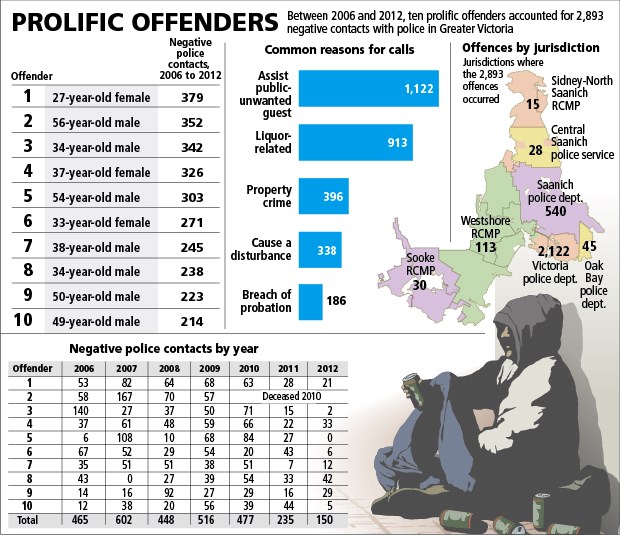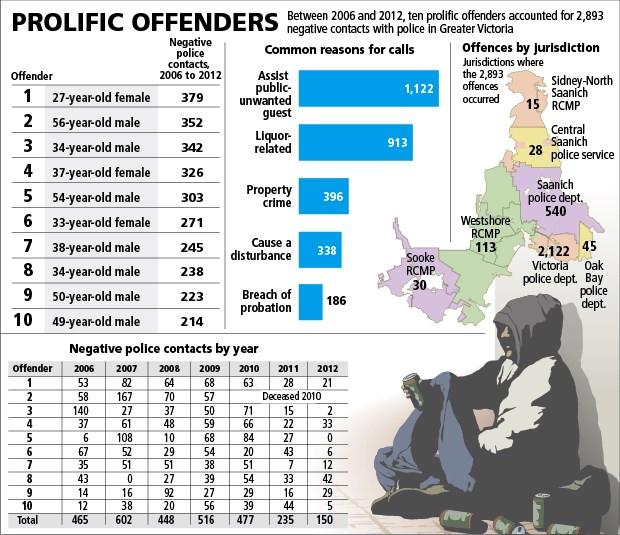The most chronic criminals in Greater Victoria are primarily petty thieves with a host of mental disorders and addictions, who are driving up the cost of law enforcement, police say.
A group of 10 criminals responsible for what can best be described as nuisance offences accounted for the largest number of calls officers responded to in the past seven years.
Aggressive panhandlers, homeless people camping and drunks walking the streets generate a high volume of calls from the public, according to data released from the CRD regional property crime unit.
The worst offender was responsible for 379 calls for service since 2006, averaging more than one call per week.
All 10 people combined were the subject of an average 413 calls per year in that same time frame.
“What’s striking about this list is the amount of calls that are not criminal in nature,” said Staff Sgt. Gary Schenk, head of the regional property crime unit.
“There are a lot of police referrals to other social-service agencies, which illustrates the holistic approach that is taken to intervene with other services, rather than just the criminal and justice systems.”
Counting only the 10 most chronic offenders, police responded to more than 1,100 assist-the-public or unwanted-guest calls, making this category the most common reason for calls for service since 2006.
A very close second at 913 calls were alcohol-related offences, including drinking in public and public intoxication.
Targeting these or similar offenders can go a long way to reducing the cost of policing and free up resources to focus on other areas, said Bowen Osoko, spokesman for Victoria Police.
“Unfortunately, with folks who are addicted to drugs or alcohol, there tends to be co-morbidity between that and criminal activity,” he said. “If you’re unstably housed and mentally ill, you’re at greater risk of drug addiction and therefore more likely to commit petty crime.”
To reduce the strain of these repeat offenders on police departments and courtrooms, several innovative programs have been used in recent years, including Victoria Integrated Court, which targets prolific offenders and monitors their behaviour through a team of support workers.
A study conducted by the faculty of health sciences at Simon Fraser University showed a 40 per cent reduction in criminal activity among a select group of prolific offenders who were monitored by a team of support workers.
Nearly 200 chronic criminals from six B.C. communities, including Victoria, were monitored between 2008 and 2010 and offered a range of services and creative punishments through special courts.
Researchers saw a 43 per cent increase in social-service payments among the offenders.
Participants were also more likely to visit the doctor and access supportive housing.
“Studies like these take the onus off police and the justice system” to be responsible for these social problems, said Stefanie Rezansoff, a PhD student at SFU and one of the report’s authors.
“We start to see how important these services are to people and their well-being.”
The results reinforce findings from similar studies in the United Kingdom, but further research is necessary to prove without doubt that the intensive monitoring was the only factor that reduced people’s criminal activity, Rezansoff said.




